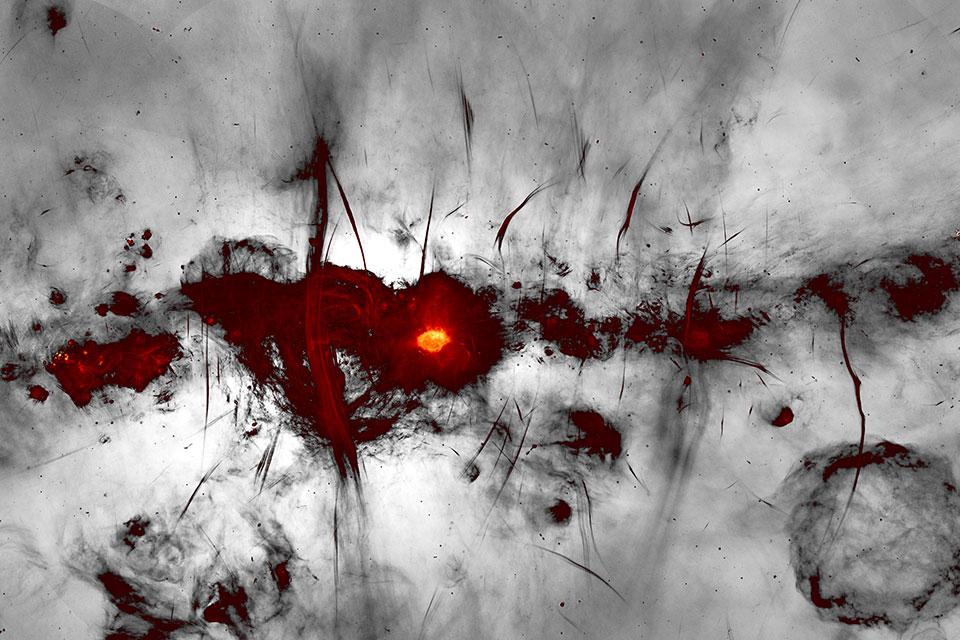An international team of researchers, led by Dr Ian Heywood from the Department of Physics, has produced a new radio image of the centre of our Galaxy using the South African MeerKAT telescope, the most powerful of its kind in the world. The image is of unprecedented depth and clarity and the findings have been accepted for publication in The Astrophysical Journal. A culmination of three years of work, the data is being released publicly so that astronomers around the world can study the detail and complexity in depth.
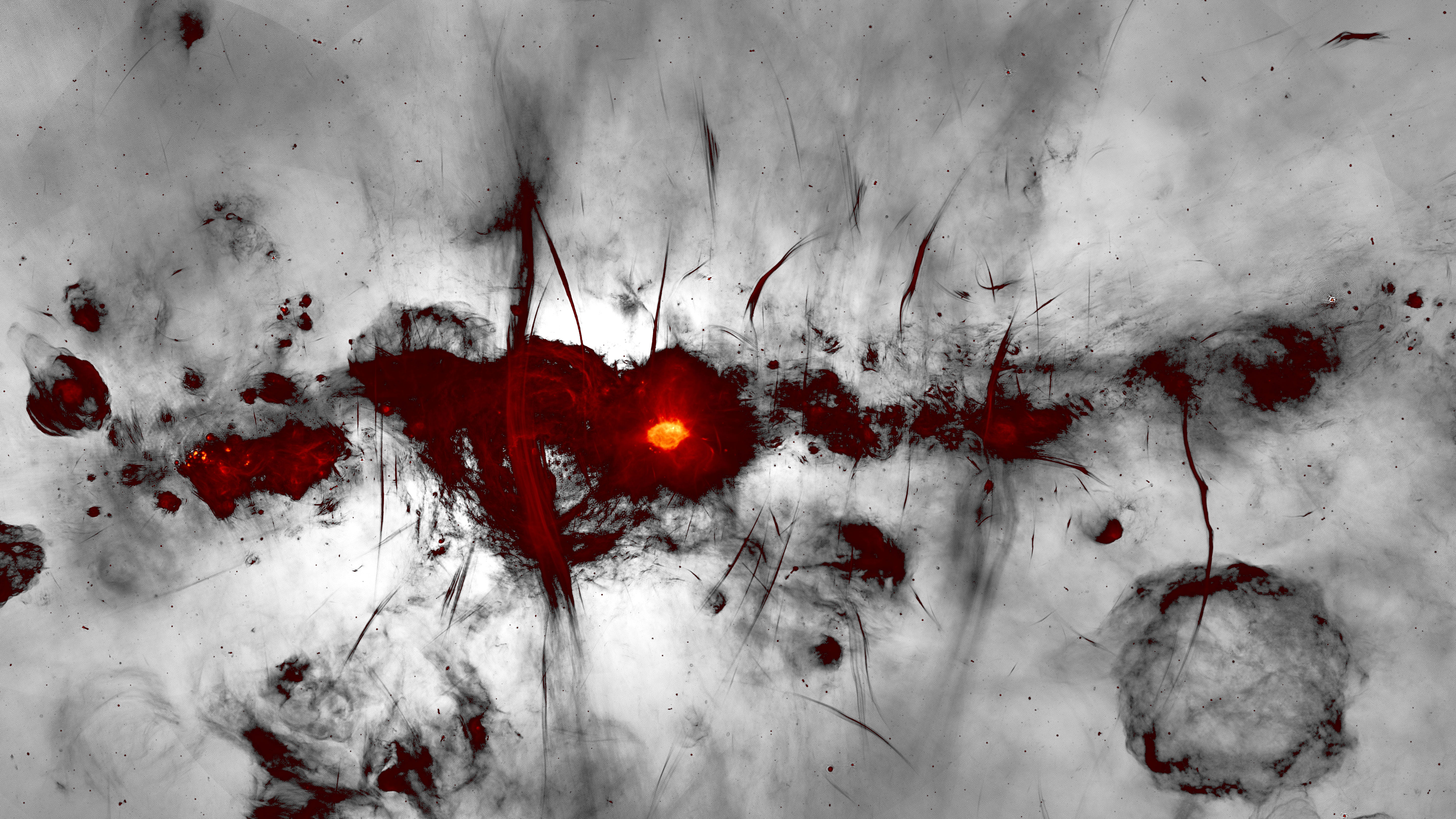
The Galactic centre region is notoriously difficult to image at radio wavelengths, due to its complexity and brightness. At 26,000 light years away, it is home to a supermassive black hole with a mass of four million Suns, in an environment that is extreme by all measures compared to that of the Galactic suburbs where our own Solar System lies. Radio waves pass unhindered through the large quantities of dust that obscure the view of the Galactic centre at other wavelengths, allowing scientists to see the energetic processes associated with star formation, outbursts from the central supermassive black hole, and the interplay of charged particles moving at close to the speed of light with the complex magnetic fields that are woven through the region.
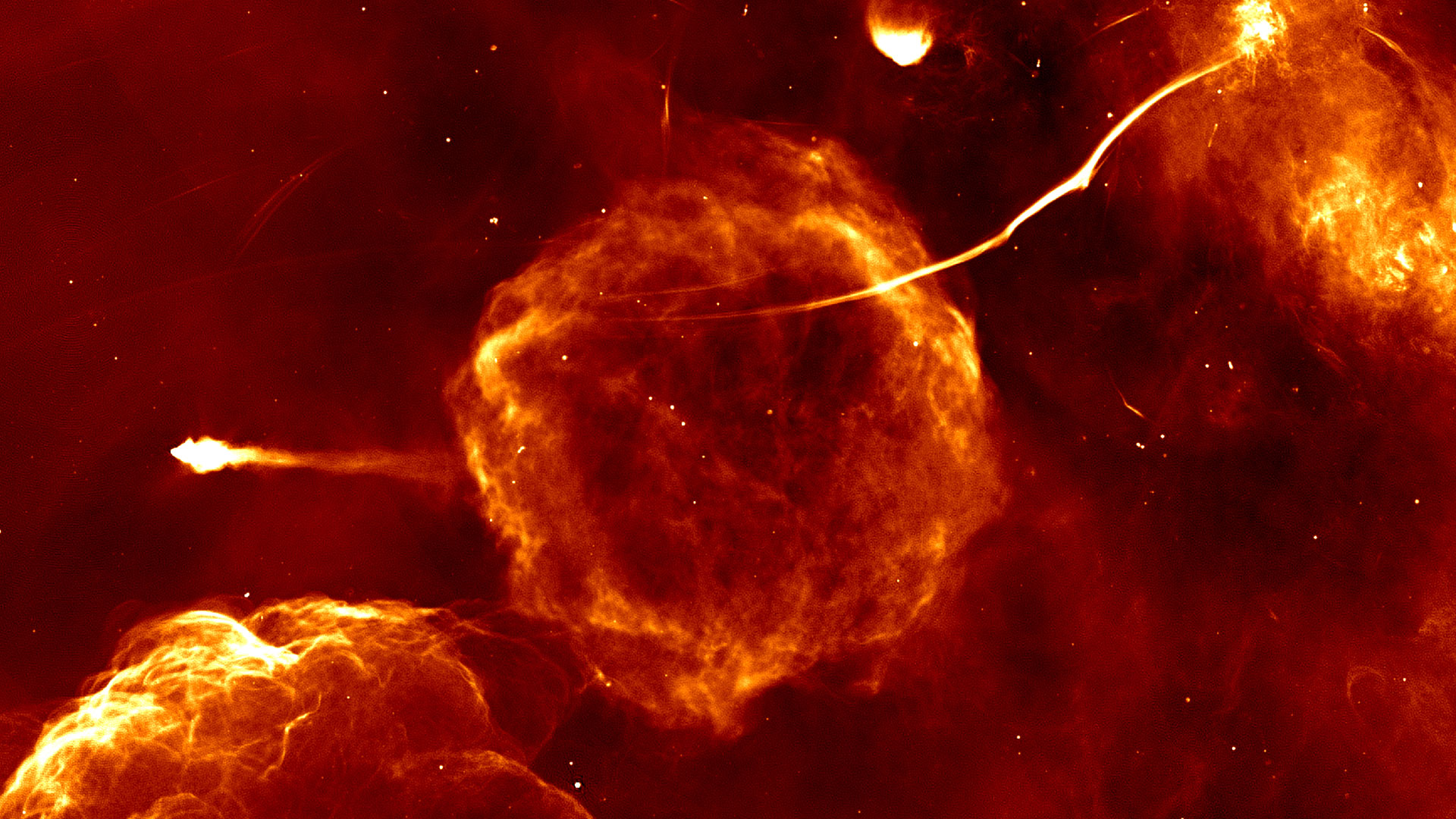
New discoveries
The quality of the image is such that the team of researchers have discovered new candidate supernova remnants – the expanding shells of material left behind when massive stars end their lives – including a rare, almost-perfect spherical example. The image also shows radio emission from outbursting stars, stellar nurseries, and streams of material around the central black hole. The new image also significantly increases the known examples of the mysterious radio filaments that are only seen at the Galactic centre; these are highly-linear, magnetised threads of radio emission, the exact origin of which has remained a mystery since their discovery over 35 years ago. These new observations will allow these objects to be studied as a population for the first time. The first inroads into such a study are presented in a companion paper, accepted for publication in The Astrophysical Journal Letters.
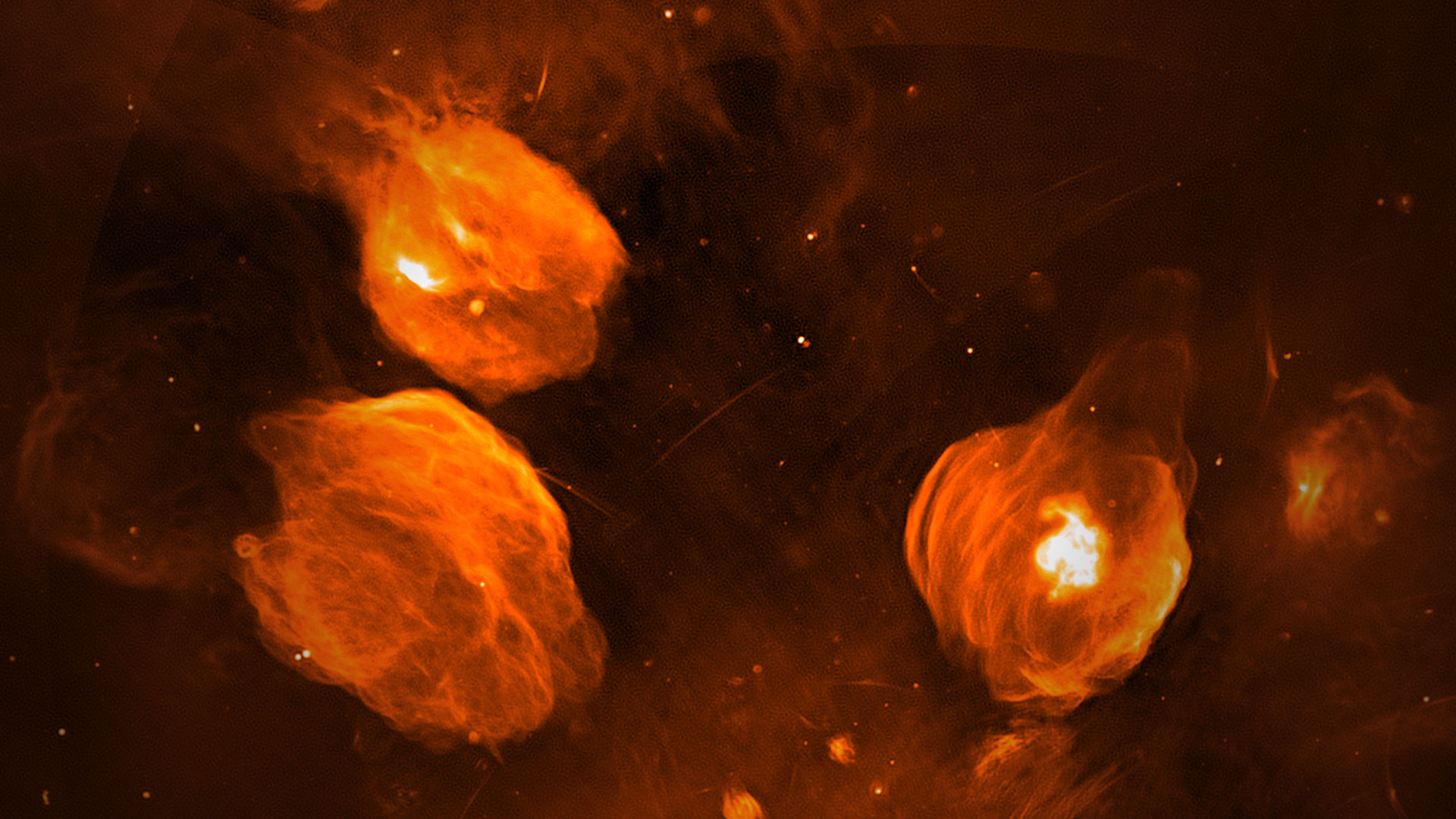
The magic of MeerKAT
MeerKAT’s design, sensitivity, and geographical vantage point have been the keys to producing these unprecedented images. MeerKAT is a radio interferometer, located in the arid Karoo region of South Africa’s Northern Cape province; it is the precursor instrument for the dish-component of the forthcoming 2-billion Euro Square Kilometre Array project.
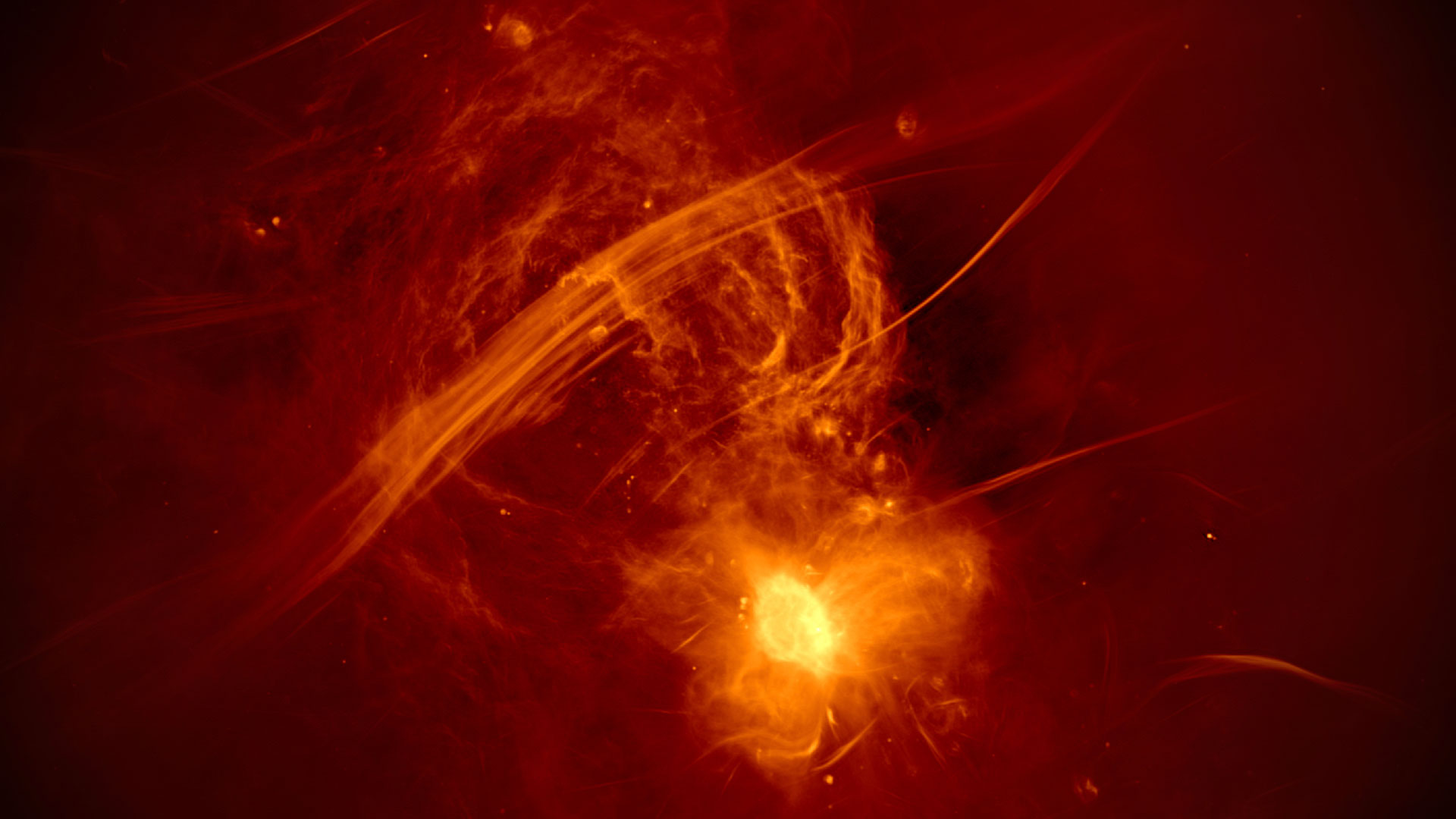
Radio interferometers are not direct imaging devices, and require complex software algorithms to convert their raw measurements into reliable maps of the radio sky. The 215 hours of telescope time used in this project resulted in a 70 TB database of measurements. Using 40 node-days of processing on two supercomputers situated in Cape Town, this was boiled down to the final hundred-megapixel scientific image, which is only 800 MB in size – a reduction factor of almost 90,000! This work represents the culmination of three years of detailed analysis of a survey conducted during the telescope’s commissioning phase. Those observations had already led to the iconic inaugural MeerKAT image in 2018 as well as the discovery of a pair of giant radio bubbles, evidence of an explosive outburst from the heart of our Galaxy several million years ago. Now, at last, the image is available in its full complexity for detailed study by astronomers worldwide.
MeerKAT and Oxford
Oxford plays a key role with MeerKAT. Two of the telescope’s flagship Large Survey Projects are being co-led by Oxford astrophysics and our expertise on the technical and data-processing aspects of radio interferometry means the Oxford also played a leading part in the commissioning and early scientific verification of the telescope. It was that involvement that led to the production of this work.
‘It has been a true privilege to work for many years with our South African colleagues who built this remarkable telescope,’ comments Dr Ian Heywood, the lead author of the work. ‘When I show these images to people who might be new to radio astronomy, or otherwise unfamiliar with it, I always try to impress upon them that it really hasn’t always been this way. MeerKAT is really demonstrating the “discovery machine” potential that we astronomers always hope a new telescope will have. Just point it at the sky and you will soon find a new puzzle that has the community scratching their heads. While we will use these new observations to address some long-standing mysteries about the Galactic centre, I’m sure the image will also generate some mysteries of its own.’
Professor Rob Fender, Head of Astrophysics at Oxford, adds: 'MeerKAT is a truly remarkable radio telescope which is paving the way towards the first phase of the Square Kilometre Array, in which Oxford proudly plays a major role. These observations demonstrate both the power of cutting edge observational technology and how much still remains to be understood about the Universe.'
Just the beginning...
Dr Heywood concludes: ‘There is much more that can be done through further processing of the data. The next step is to produce images that measure the polarisation of the radio light as well as its brightness, which will allow us to map out the complex magnetic field that exists in the Galactic centre region, and investigate its relationship with the central supermassive black hole, the population of radio filaments, and the radio bubbles. This image is just the beginning!’
The 1.28 GHz MeerKAT Galactic center mosaic, I Heywood et al, arXiv
Statistical properties of the population of the Galactic center filaments: the spectral index and equipartition magnetic field, F Yusef-Zadeh et al, arXiv
The 1.28 GHz MeerKAT Galactic center mosaic (image data release), I Heywood et al, South African Radio Astronomy Observatory
Read the South African Radio Astronomy Observatory news release.

